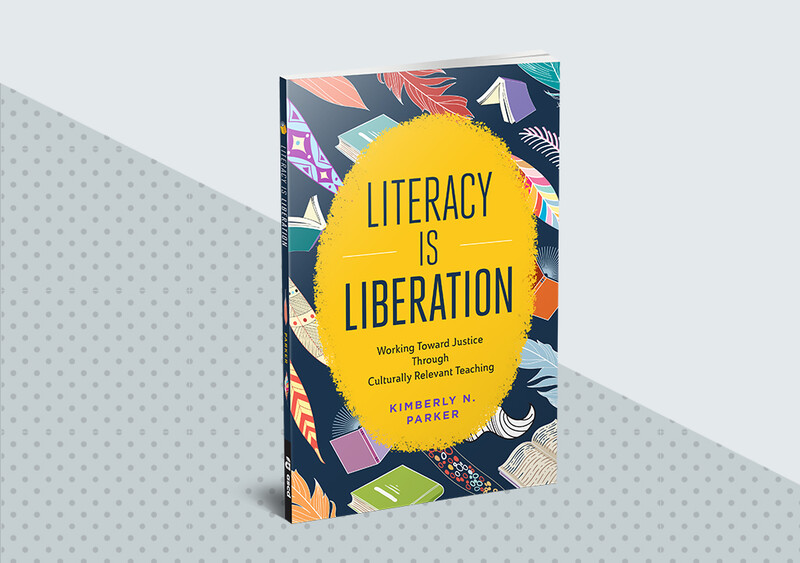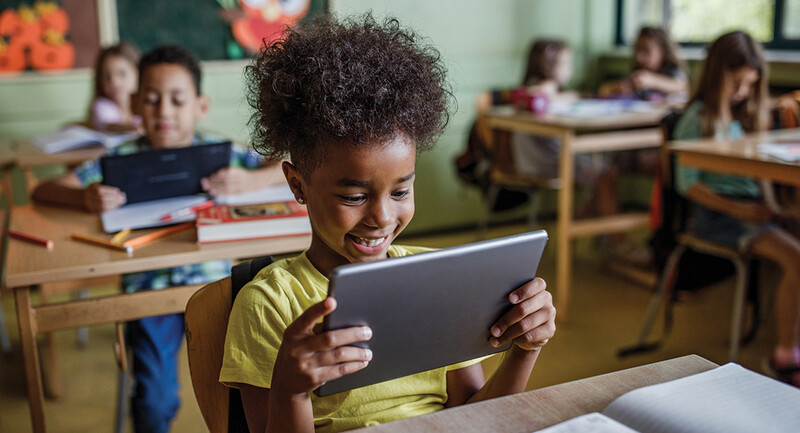Lately, I've been considering how English language arts educators might shift our literacy practices in ways that would encourage self-direction for students as readers (and creators), imbuing what the Alliance for Self-Directed Education calls "playfulness, curiosity, and sociability" into kids' in-school literacy experiences.
Bringing playfulness and curiosity into school is especially important now, as in-person school returns and many students—especially students of color—may feel they're losing the ability to direct their reading lives. And don't forget sociability—young people have missed interactions with their peers, too. The chance to read what they love in school and to guide their own trajectory is essential for our students. To this end, setting up regular choice independent reading time, including opportunities to respond to texts, can help literacy educators protect students' agency and invite them into the joy of reading.
While confined during the pandemic, many children and young people practiced their own types of literacy experiences and enjoyed them. Students have told me they pursued their own interests on their own terms and at their own pace: teaching themselves new languages, learning about their own cultural histories, and connecting themselves and peers to mental health resources, to name a few. They ingeniously incorporated whatever technologies were available to them—even with unreliable internet access—to follow their interests. These young people used literacy as a means to engage with their worlds: They gathered texts and evaluated them and found resources they needed to build relationships with others around their interests. Educators and families witnessed students finding agency through literacy-related practices, in unprecedented times.
Connecting Students' Reading Worlds
I fear the current urgency around "learning loss" will obscure the full story of the learning that BIPOC children and youth have continued to do. I also worry that as learning becomes tightly structured again, students may feel disconnected from literacies they've been enjoying outside of school—and feel little connection to in-school literacy (which they often have no input on). They need a bridge that joins these worlds and communicates that we value their agency. Self-directed literacy learning can provide that bridge, and configuring our classrooms for ongoing independent reading is a key step to that end. We can support students with two general approaches: honoring their text choices and listening deeply to what they tell us about their literacy needs.
1. Provide Time for Texts Students Love
The National Council of Teachers of English defines independent reading as a "routine, protected instructional practice that occurs across all grade levels."During this time, students in all grades of K–12 should be able to select books of interest to them, sometimes from classroom libraries, sometimes from their own collections. Inviting students to read whatever they want, (and respond with their own styles and practices of writing) is a point of entry to encourage a connection to (or extension of) students' reading lives.
Daily time for students to select texts that resonate with them creates a safe container for them to practice literacy meaningfully. We can collaborate with our students to support their interests and make reading a pleasurable community practice. What does this look like? It looks like ordering texts that reflect their interests (even if we don't share those interests); letting kids write and talk about their interests; and encouraging them as they connect and create original texts inspired by those they read. We can follow their lead.
2. Listen to Children
In classrooms, we can carve out time and space to listen to our students and learn their interests and then take those interests seriously. I'm talking about engaged, active listening that enables us to develop a deep understanding of children's experiences, ideas, and inspirations, and that helps us foster connections with them. In this role, we value students' knowledge and expertise. Understanding children is the sole aim. Once we understand what lights them up, we can work together to find texts that resonate with them.
I've also long known that the children who present the most complex challenges to our instruction have robust internal lives. Unfortunately, because too often the first reaction we have to them is related to their behavior, we limit how we interact with them and hear them—if we even hear them at all. But children with challenging behaviors are complex: they have interests, passions, and desires. Let us strive to listen and be guided to support their literacy lives, too.
We know, too, that children and young people have missed interacting and need time to practice their communication skills. During these independent-reading times, we can help meet those needs by encouraging them to chat about their texts authentically.
Risk Not Returning to Normal
Some teachers might be hesitant about giving students the reins in their literacy practice by scheduling daily time for routines like free-choice reading or for students to write in their own fashion and discuss texts together. If we aren't practiced in centering students' interests and expanding our idea of what literacy work is, devoting this time can feel risky. Yet, if we look over our schedules and decide to make the time, we can find ways to begin making space for self-direction. Independent reading can coexist with other classroom literacy structures; in fact, it deepens other ongoing literacy work that is already happening. These times can also become opportunities for children to build their confidence and fluency as readers by selecting and having time to read books that are personally meaningful.
We might have to confront our own biases about who "should" be leading instruction in our educational settings. When we make space for self-direction, we often learn beside our students, which can be a powerful, impactful shift. But if we want to truly make our educational settings places where all students feel valued, believed, and welcomed to practice literacy, we need to clear the way for them to do that while they are with us.
We know that many children are hungry for a deeper, more authentic connection to school, a connection that strengthens them against what can feel like an onslaught of external demands they've no say about. Too often, we haven't centered our students' curiosity and passions—or our role in developing their literary agency. The return to in-person learning threatens a return to normal that can continue to pose barriers to expansive literacy practices. Educators can either view the next few years as time for "more of the same" or as a time to aim for different learning opportunities that can positively impact reading achievement.
Especially now, we have an opportunity. Self-directed literacy learning encourages us to pursue freedom with our students, to go with them beyond what we might think literacy "should" look like. Let's embrace this moment to commit to agency-building literacy practices.
Literacy Is Liberation
Literacy is the foundation for all learning and must be accessible to all students, writes Kim Parker. In her new book, Parker gives teachers the tools to build culturally relevant intentional literacy communities with students.










